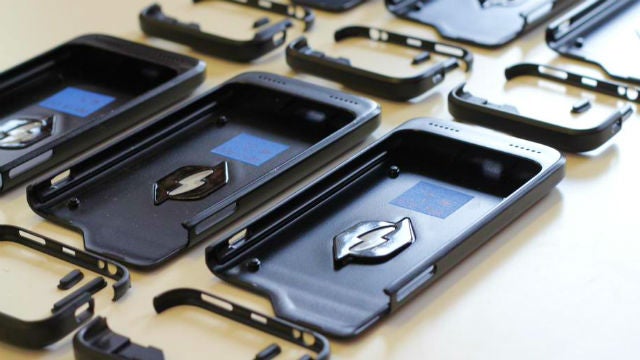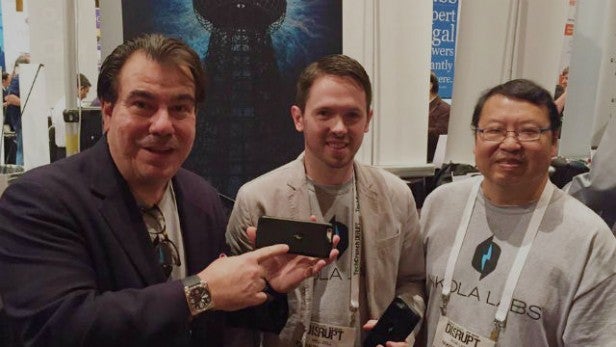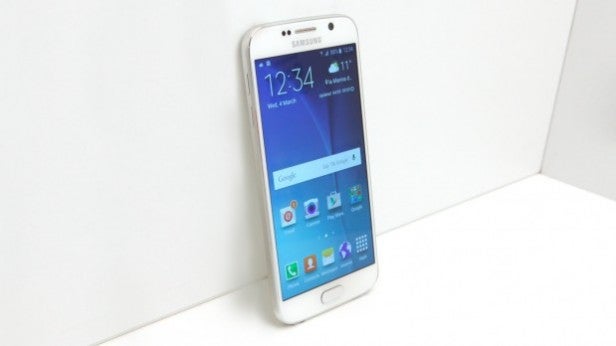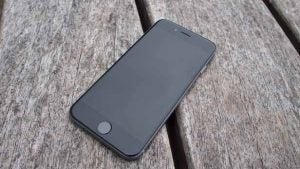Is this the iPhone 6 case to finally end your battery woes?

Phone cases that give your handset an injection of battery are a dime a dozen these days. Will Zell and Flavio Lobato, the CEO and the Chairman of the Board of Directors at Nikola Labs believe they have a solution that’s truly innovative.
The Ohio-based startup is nearing the end of a Kickstarter campaign, which ends on the 22nd of July. What’s it planning to launch? Two new smartphone cases, for the iPhone 6 and Samsung Galaxy S6.
You won’t be surprised to learn that these are no ordinary cases. They’re designed to improve battery life – official figures say this is to the tune of 30% – but not through the use of an additional power pack. Nikola Labs’ invention does things in a very different way.
The cases contain a system that harvests radio frequency (RF) waves and converts them into DC power, which is subsequently delivered back to the phone. If you think that sounds futuristic, Nikola Labs CEO Zell argues otherwise.
He says that most of the technology that’s gone into the cases has been around for a century, but only now has somebody found a way to strike the perfect balance between capturing enough RF energy and converting it into power without impacting data or call quality.
Related: Best crowdfunding campaigns of the month
Wasting that RF energy
That person is Dr Chi-Chih Chen, a research associate professor at Ohio State University (OSU) hailed as a genius by Zell and Lobato. He has a wealth of antenna design and RF harvesting expertise and, combining the two disciplines, laid down the foundations for Nikola Labs.
“The two brought together are really what matter for this technology,” says Zell. “It’s a complex solution with relatively simple, scientific, known technology. The process of pulling it together is what’s really novel about this.”
Without wanting to delve too deeply into the ins and outs of the technology, it’s worth explaining that phones are constantly transmitting RF waves. Zell and Lobato tell me that these are what carry data to a Wi-Fi router or a cellular tower.
The small antennae used by phones need to broadcast omni-directionally, in order to enable long distance communications. As a result, many of these waves dissipate into the environment. In simpler terms, it’s wasted.
However, Zell is keen to stress that this is not down to an obvious smartphone design flaw. Rather, he says it’s down to the nature of antennae and the way in which we hold our phones. Larger antennae are more focused, but aren’t exactly pocket-friendly .
The hardware inside Nikola Labs’ special cases comprises strategically-positioned antennae that receive and capture RF, before bringing it down to a rectifier circuit. Here, the RF waves are converted into direct current, which is fed down into the power management system, the primary purpose of which is to store DC until it hits the 5V mark, then a gate opens up and sends the energy back into the phone.
If that’s a bit much to get your head around, consider solar energy. Zell says this is the same concept, but instead of transforming light into electricity, the case converts electromagnetic waves.
Where the magic happens
“This is not hocus pocus,” says Lobato, completely straight-faced. “We’re not charging the phone, we’re slowing the discharge rate. That’s an important distinction. The case isn’t going to take your battery from 50% to 100%.”
Conveniently, there’s no need to turn anything on or off. The system enclosed within the cases activates when it senses RF, automatically turning off when it doesn’t.
“The user doesn’t have to do anything,” says Zell. “It should last the life of your phone with normal usage.”
Like any case worth its salt, Nikola Labs’ products are also protective. They’re predominantly built from sturdy-feeling polycarbonate, which Zell tells me should protect the iPhone or Galaxy S6 from everyday bumps and drops. They’re a little longer than the phones themselves, but he says that the cases will shrink over time.
While the official word is that the system will extend battery life by 30%, Lobato teases that further testing has revealed this figure to be very modest. He’s reluctant to reveal any specific numbers, but says he’s very comfortable it will take users from sunrise to sunset without them having to worry about plugging their phone into any sockets.

This is bigger than cases
Despite the impending launch of the two cases (planned for January 2016) Lobato insists that Nikola Labs is not a phone case company. Instead, the firm has drawn up far more ambitious and interesting plans.
“Our goal will be eventually to work with manufacturers and embed that technology into phones themselves,” he says. “That’s the end game. That takes time, of course, but it’s completely doable. We’re not a phone case company. We’re looking at the Apple Watch, GoPro cameras, anything that emits Wi-Fi signals or Bluetooth. And the next stage would be low-power sensors, like smoke detectors.”
Lobato hints that OEMs have already expressed an interest in Nikola Labs’ system, but he’s not allowed to reveal any more details. However, he does reveal he’s hopeful that direct integration could come sooner rather than later.
He also envisages a cordless future, though we’re straying into the very long term here. Right now, the company has a Kickstarter campaign to focus on.
This was launched on the back of Nikola Labs’ Startup Battlefield debut at TechCrunch Disrupt New York, where it was selected by the audience as a wildcard contestant.
The ongoing crowdfunding campaign has been highlighted by Kickstarter as a ‘Staff Pick’, and Zell and Lobato reckon the attention their case has attracted is partly down to its green credentials. Lobato, whose home town is in the Amazon, says that preserving the environment is very important to Nikola Labs.
Going green
Zell says that the case can be considered a greener solution for two reasons. First and most obviously because it extends battery life and therefore reduces the number of times you need to charge your phone. However, he considers the other reason far more significant.
“The alternative for this solution is always a battery, which is filled with harmful chemicals, and incredibly hard to dispose of,” he explains. “So you’ve got a proliferation of batteries on the market that are potentially very harmful to the environment.”
Something else that sticks out is the speed at which Nikola Labs has evolved. The cases have gone from the concept stage to prototypes in 8 months, and Zell and Lobato want to get the technology to market in the next 6 months. It’s fast progress and I’m curious as to how Nikola Labs has gone about its business so quickly.
Lobato says the company had a clear vision of what it wanted to do from the outset, and most definitely isn’t twiddling its thumbs while the Kickstarter campaign goes on.
“We’re not waiting for Kickstarter to end to be able to figure out the next steps,” says Lobato. “We’re already executing our manufacturing plan.”
Nikola Labs is in a privileged position. It’s already secured funding from strategic investors and doesn’t necessarily need the money it’ll raise through the Kickstarter campaign. Instead, it’s using the platform for validation purposes, and to kick off dialogue with early adopters.
Lobato says it’s important for startups to prove to investors that there’s real interest in their products, and Kickstarter has allowed Nikola Labs to do that.
Related: 5 pieces of modular tech to get excited about
Trying to find that breakthrough
However, this isn’t to say that it’s been plain sailing so far. “You hit walls constantly, every day,” admits Zell. “Trying to take a breakthrough technology to market is not easy, but it’s exciting and worth every challenge.”
If things had panned out slightly differently, the technology behind Nikola Labs might never have left the lab.
Lobato is the co-founder of IKOVE Capital Partners, which discovered Dr Chen’s work at OSU and set about commercialising it. If the firm hadn’t stepped in, Zell and Lobato assure me that the technology would be festering with thousands of other patents on a shelf in OSU right now.
“It’s important to know that how researchers are incentivised has nothing to do with commercialisation,” says Zell. “Research institutions incentivise their researchers around published papers, around tenure, and around overall reputation.
“There are zero incentives built around actually taking your research and your technology and getting it to market. There are bookshelves of patents and technology at any research institution that have been sitting around for years.”
Lobato tells me that while billions of dollars go into R&D at research institutions, funding tends to fizzle out before investors swoop in, causing teams to hit a wall and excellent lab technologies to simply disappear. This is, rather dramatically, called the ‘Valley of Death’. Interestingly, Lobato believes that money – or lack of it – isn’t actually the biggest issue.
“Capital is important but not crucial,” he says. “It’s more about the structure. How to put multi-disciplinary teams in place, and how to launch it in the right way.”
Lobato reckons there needs to be a change of culture in universities, but concedes that this will be difficult to trigger, especially as such developments are often relationship-dependent. Right now, there’s a lot of intellectual property that’s going to waste.
“There are technologies that deserve to be shared with humanity,” says Zell. Is Nikola Labs’ smartphone case one of those? It certainly sounds promising.
You find out more on the Nikola Labs project by heading to the company’s Kickstarter page.


